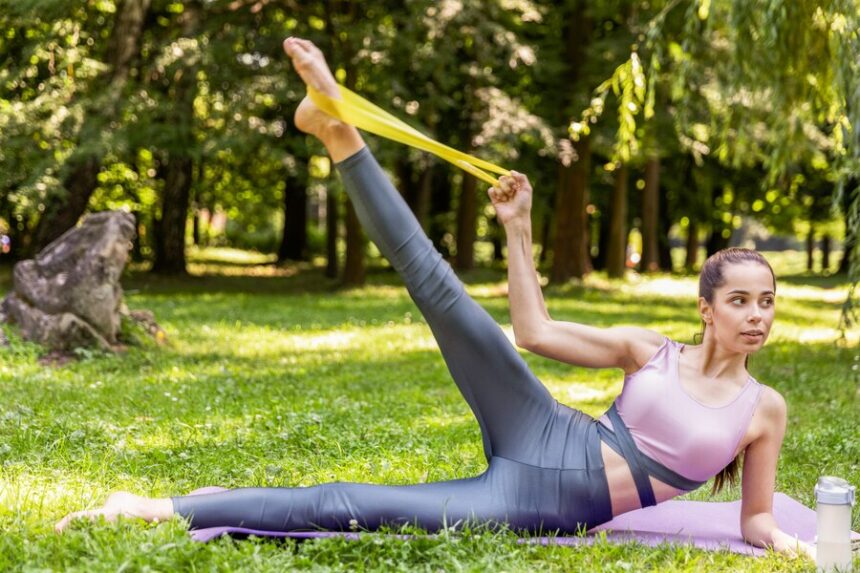Resistance bands are versatile tools that can enhance any fitness routine. They are used for strength training, flexibility, and rehabilitation. Many people find that resistance bands allow for effective workouts at home, in the gym, or even while traveling. With various styles and resistance levels available, there is an option for everyone.
Choosing the right resistance band can improve workout results and prevent injury. Users can incorporate these bands into different exercises to target multiple muscle groups. Understanding how to use them safely and effectively leads to better fitness progress and overall enjoyment of workouts.
Whether for beginners or seasoned athletes, resistance bands offer countless benefits. With advancements in band technology and various exercises, these tools keep workouts fresh and engaging.
Key Takeaways
- Resistance bands are suitable for all fitness levels.
- Proper use can enhance workouts and prevent injuries.
- They are easy to transport and store for on-the-go fitness.
What Are Resistance Bands
Resistance bands are versatile exercise tools that come in various materials and designs. They are popular for strength training, rehabilitation, and enhancing flexibility. Understanding the different materials and types, as well as their benefits, can help individuals choose the right band for their fitness journey.
Materials and Types
Resistance bands are made from several materials, primarily latex and non-latex options. Latex bands are popular due to their durability and stretch. Non-latex bands, often made from synthetic materials, are ideal for those with latex allergies.
There are four main types of resistance bands:
- Loop Bands: Continuous loops used for a variety of exercises.
- Tube Bands: Hollow tubes with handles, great for upper-body workouts.
- Figure 8 Bands: Shaped like a figure eight, often with handles for easy grip.
- Ankle Resistance Bands: Designed to wrap around the ankles for leg exercises.
These bands come in different thicknesses, providing varying levels of resistance to match fitness levels.
Benefits of Using Resistance Bands
Resistance bands offer numerous advantages for fitness enthusiasts. First, they are portable and lightweight. This makes them easy to use at home, in a gym, or while traveling.
Second, bands provide variable resistance. Unlike free weights, resistance bands create tension at both the beginning and end of an exercise, enhancing muscle activation.
Third, they are suitable for all fitness levels. Individuals can easily adjust the resistance by changing the band or the amount of stretch. This versatility helps users gradually increase their strength and move toward their goals.
Lastly, resistance bands are excellent for rehabilitation. They help improve mobility and strength after injuries, making them a valuable tool for physical therapy.
Resistance Bands Exercises
Resistance band exercises are effective for building strength, improving flexibility, and enhancing mobility. They can be easily performed at home or in a gym setting. These exercises target various muscle groups while allowing for flexibility in workout intensity.
Upper Body Workouts
Upper body workouts with resistance bands focus on strengthening the arms, shoulders, and back. One effective exercise is the band pull-apart. For this, hold the band in front of the chest with both hands. With a slight bend in the elbows, pull the band apart until the arms are fully extended. This works the shoulders and upper back.
Another great exercise is the standing row. Secure the band around a solid anchor at waist height. Grab the ends of the band and step back to create tension. Pull the band toward the waist, squeezing the shoulder blades together. This helps target the back muscles and biceps.
Other notable exercises include overhead presses and lateral raises. To perform an overhead press, stand on the band, grasp the ends, and lift above the head. Lateral raises involve standing on the band and lifting the arms to the side for shoulder strength.
Lower Body Workouts
Lower body workouts enhance strength in the legs, glutes, and hips. The squats with resistance bands are a popular choice. Place the band just above the knees and perform a squat, pressing the knees outward. This effectively targets the quads, hamstrings, and glutes.
Another effective exercise is the glute bridge. Lie on the back with knees bent and feet flat. Place the band just above the knees, then lift the hips to fully engage the glutes. This strengthens the posterior chain.
Lateral band walks are also beneficial. Place the band around the legs and take small steps to the side, keeping tension in the band. This moves the hips and strengthens the outer thigh muscles.
Core Exercises
Core exercises using resistance bands improve stability and strength. The band-resisted plank is one effective move. While in a plank position, place the band around the wrists. Pull the hands apart while maintaining the plank for a challenging core workout.
Another useful exercise is the Russian twist. Sit on the floor with knees bent and feet elevated. Hold the band with both hands and twist the torso from side to side. This targets the obliques and enhances rotational strength.
For a full-body approach, the standing core rotation can be done as well. Stand on the band with feet shoulder-width apart and hold the ends at chest level. Rotate the torso while keeping the arms steady, which builds core and upper body strength.
Flexibility and Mobility Drills
Flexibility and mobility drills with resistance bands can improve range of motion. The banded hamstring stretch is effective. Lie on the back and place one foot inside the band. Gently pull on the band to stretch the hamstring, holding for a few seconds on each leg.
The banded shoulder stretch can also enhance flexibility. Hold the band behind the back and grab both ends. Gently pull the band and raise the arms to stretch the shoulders and chest.
Additionally, the hip flexor stretch can be performed. Anchor the band to a low point and loop it around one ankle. Step away to create tension and lean forward to stretch the hip flexors effectively.


